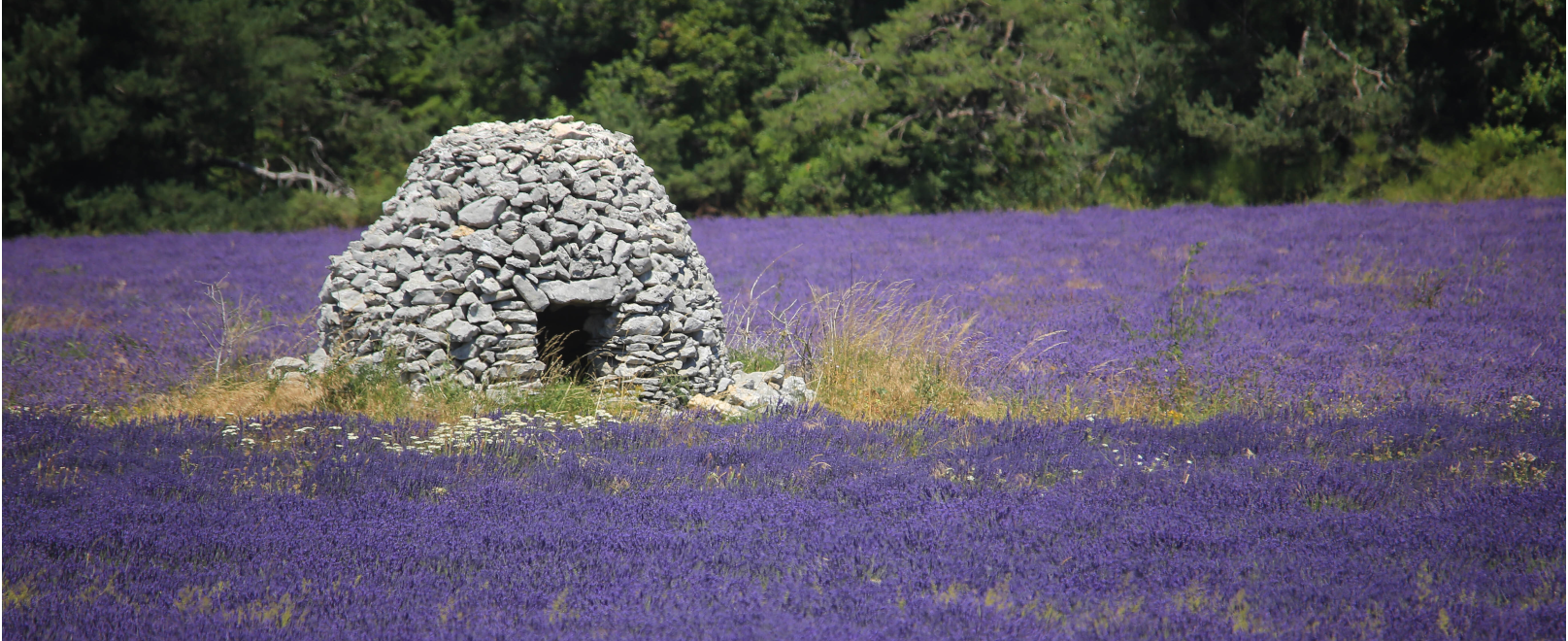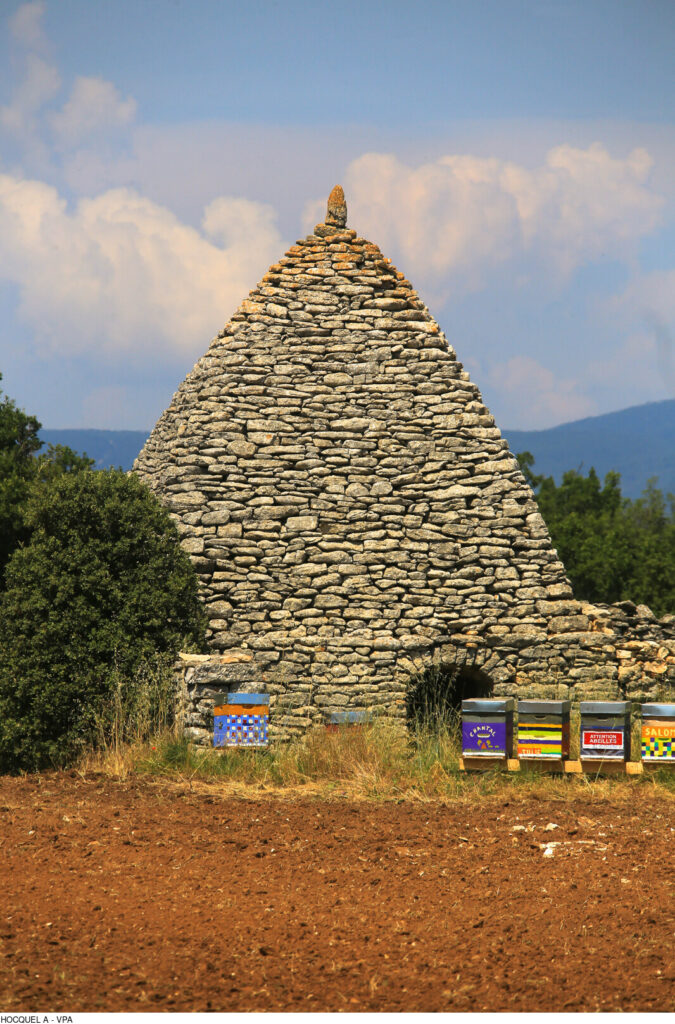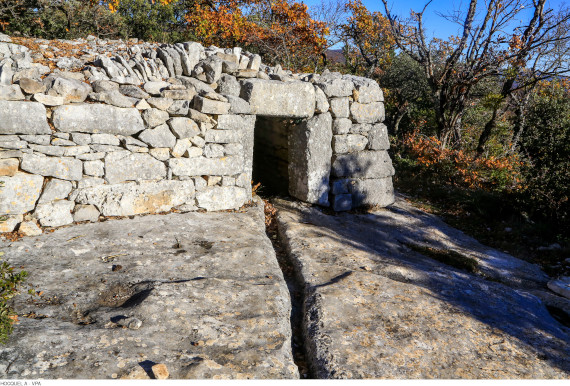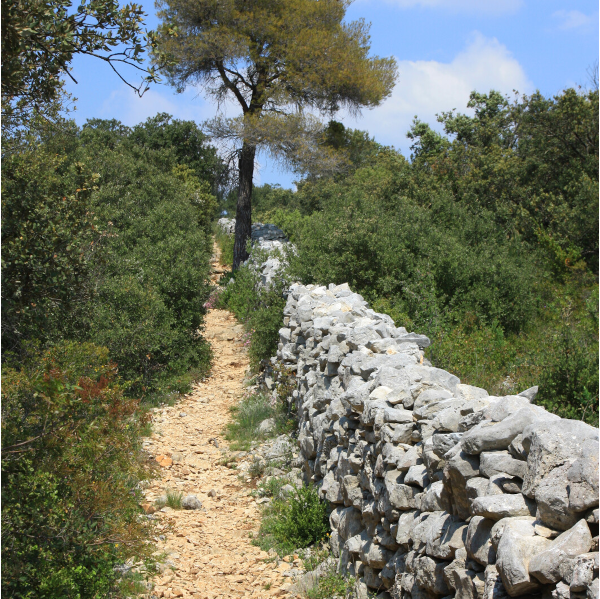
The ancestral art of dry stone in Vaucluse
Know-how listed as intangible heritage by UNESCO
There are many dry stone structures on the plateaux of Vaucluse, which are often in the form of walls to structure the landscape or in the form of bories, little round huts that are characteristic of Southern France. The construction technique, which uses stones assembled without any binding agent, is on UNESCO’s representative list of the intangible cultural heritage of humanity. What is less well known, is that many other structures were built in this way in Vaucluse, such as the Mur de la Peste (or plague wall). An overview.
From a simple hut to the bories village
An emblem of the Luberon
The art of joining together uncut stones is very present in mediterranean regions, particularly in Provence, where the land is said to have been dug out to channel water and cultivate the soil while preserving the stones found on site. These were first carefully stacked for storage were then reused in various structures. The most famous works are the little houses which, depending on their design, were used as shepherds’ shelters, hunting huts or rural dwellings, as illustrated by the bories village in Gordes.
Classed as a historical monument in 1977, this is one of the most visited sites in Vaucluse. It contains the largest group of bories (5 dwellings and their outbuildings) built around a bread oven in the 18th and 19th century. It’s a beautiful snapshot of the rural habitat of the time, where coins bearing the effigy of Louis XIII, XIV and XV have been found, as well as pottery from Apt.
The troglodyte dwellings in Saumane de Vaucluse are also among the listed dry stone sites, as is the village of Barry in Haut Vaucluse.
Finally, Rocher de Saignon boasts a spectacular view over a number of stone buildings, lavender fields and the bories in the distance.

Did you know ?
The Parc Naturel du Luberon contains 1,610 bories across 11 communes.
Along the walk through the cedar forest 4 km from the village of Bonnieux, the bories enclave reveals the remains of a village.
More than 300 bories have been listed in the villages of Venasque, Le Beaucet and La Roque sur Pernes.
Photo spot: Plateau des Claparèdes, near Apt, where the bories stand on lavender fields

Elements of rural development


Don’t miss
Conservatoire des Terrasses de Cultures In Goult: winding staircases and a cistern dug into the rock make up this site on the hillside, set beside the bories.
Beehives, cobbled paths and threshing floors have also been built with stone found on site.
Drainage tunnels, gutters, ‘aiguiers’ (ancient covered water tanks, mainly found in Saint Saturnin les Apt) and cisterns for storing water or wine are other typical dry-stone structures. Finally, in the middle of the garrigue, among the pines and aromatic herbs, small low walls appear here and there. Built on sloping hillsides by farmers in the 12th century, they form terraces to irrigate and protect crops from the ravages of heavy rain.
Le Mur de la Peste
A health border stretching across the Monts de Vaucluse
It’s probably the most impressive structure in terms of its history: on the Vaucluse plateau, a wall of which there remains only a few stones in places bears witness to the Great Plague of Marseille in 1720, which broke out after the ship Le Grand Saint Antoine docked in the port of the Phocaean city, Marseille.
Built in a hurry from Monieux to Cabrières d’Avignon between March and July 1721 by order of the papal vice-legate to protect the Comtat, Mur de la Peste was used as a health border until 1723. 27 km long and 2 m high, dotted with gatehouses, guard posts and enclosures, it winds its way through the Monts de Vaucluse – Cabrières d’Avignon, Lagnes, Murs, Venasque and Méthamis.

Hike along the Mur de la Peste
You can discover this piece of heritage along a signposted trail, either for a day or in stretches of 5 to 9 km, starting in Lagnes (parking on Maquis du Chat, AR 3km500) or in Cabrières d’Avignon (cemetery parking, AR 4km).






